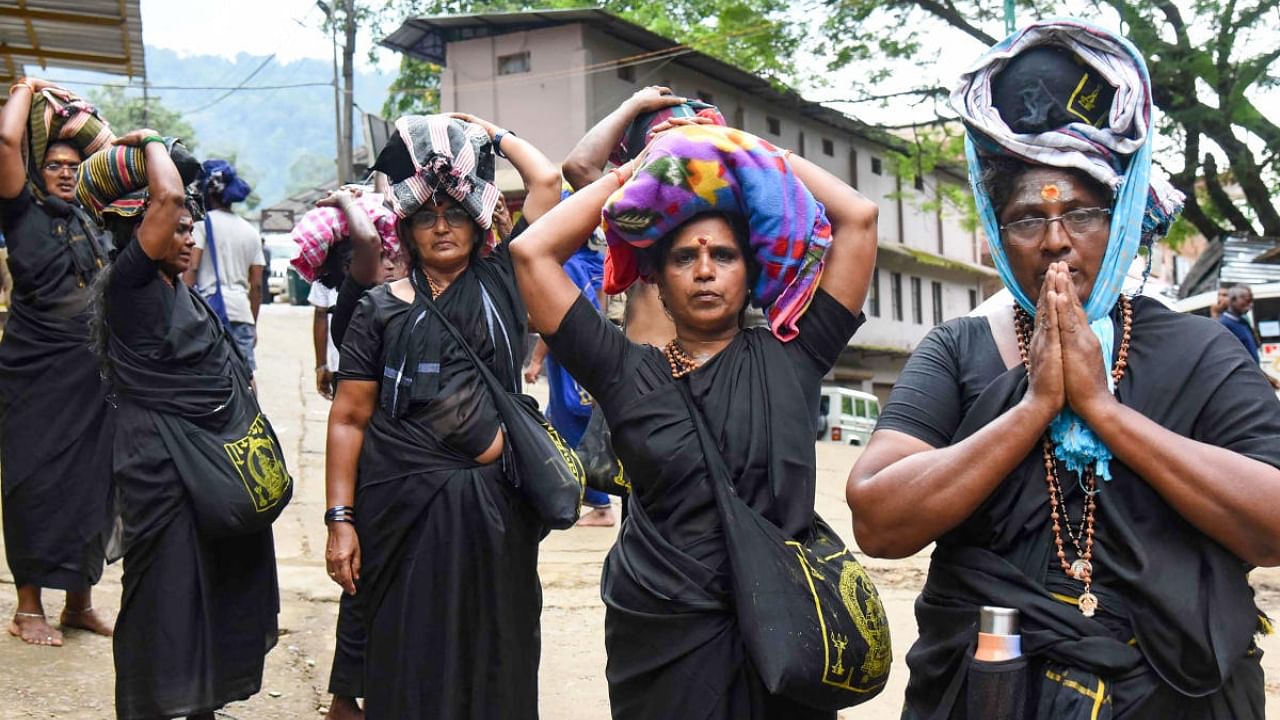
Women’s entry into Sabarimala has been highly debated in the last few years. Rule 3(b) of the Kerala Hindu Plan of Public Worship (Authorization of Entry) Rules, 1965, prohibits women of menstruating age from entering the temple. While many spoke against such a discriminatory practice as this propagates the myth of menstruation being impure, temple committees, right-wing political parties, and even the women’s campaign “#readytowait” support such restrictions in the name of tradition.
However, the Supreme Court ruled in 2018 that women from all age groups can enter the temple as the constitution provides everybody “the right to pray.” Even after the legal recognition, the extent to which women’s entry has been welcomed remains questionable in the face of recent controversy.
On the other hand, Jama Masjid has restricted the entry of unaccompanied women inside the mosque in the past few days. The Masjid Committee claimed unaccompanied women engage in “obscene activities” with men inside the premises. Hence, such a restriction is necessary to maintain the sanctity of the mosque. After facing severe backlash in the media and intervention from the National Commission for Women, the Masjid Committee had to roll back the recent order.
It is interesting to note that in the former case, women of certain ages are unwelcome, as the presence of menstruating bodies might distract the celibate deity. In the Masjid, while women are barred entry due to their “improper engagement” with men, the latter do not face such restrictions. Women’s bodies and choices are held solely responsible in both religions for distracting earthly men or the sacred deity.
Throughout the history of religion, it has restricted women’s mobility and questioned their choices and free will. Hence the question remains: why are women so keen on entering religious spaces, despite facing severe restrictions in various incidents?
Women’s access and presence in public spaces are still primarily limited and questioned by the patriarchal construct of society. A large section of women in India still remain tangled in their private world of family and kin networks. Even when they occupy public spaces, it fundamentally differs from how men capture them. Women negotiate between their freedom and necessity with safety and morality concerns while occupying male-dominated public spaces.
While men frequently gather in local tea shops, clubs, and playgrounds and loiter individually or in groups, women capture public spaces with a specific agenda. From going to work to picking up children from school, women have a particular agenda and destination; they rarely have the freedom to loiter. The “Why Loiter” campaign, which started in Mumbai in 2014, tries to raise the conversation around women’s access to public spaces and highlights the pleasure of loitering. While such movements can help initiate a conversation, a large social media dependency might make them exclusionary, benefiting women with social and economic privileges.
The second round of Indian Human Development Survey data highlights the stringency of restrictions for married women aged between 15 and 49 when they venture into public spaces. More than 80 per cent of them have to get permission from their husbands or elderly family members to visit relatives or friends’ homes, to go to the health centre, or to travel a short distance by train or bus; 79 per cent of them have yet to travel anywhere outside of their current residential area in the last five years. Such being the scenario, religion might provide women with the perfect pretext, context, and opportunity to venture through the public space. Compared to other spaces, visiting religious spaces might be less restrictive as the idea of sanctity and safety is implicitly attached to the latter.
Beyond devotion and finding refuge in God, access to religious spaces can provide women with a necessary, albeit temporary, freedom while accessing the public space. Academic works and several regional works of literature have shown that visits to shrines, mosques, and tombs provide them with a legitimate pretext to roam around the neighbourhood individually or in groups and enjoy leisure. Visits to pilgrimage can be a rare opportunity to travel to far-away places, while otherwise, most women remain alienated from the idea of travelling. Access to such spaces can provide an opportunity to build social connections and forge new friendships and solidarity. Under the guise of restrictions on mobility, religious spaces (as we can see in Jama Masjid) provide a unique opportunity for women to loiter and to forge new relationships, even with people of the opposite gender, on their own terms. Under the watchful eyes of patriarchy, religious spaces might be a doorway to a much wider public space.
(The writer is a PhD scholar at the Centre for Development Studies, Kerala.)